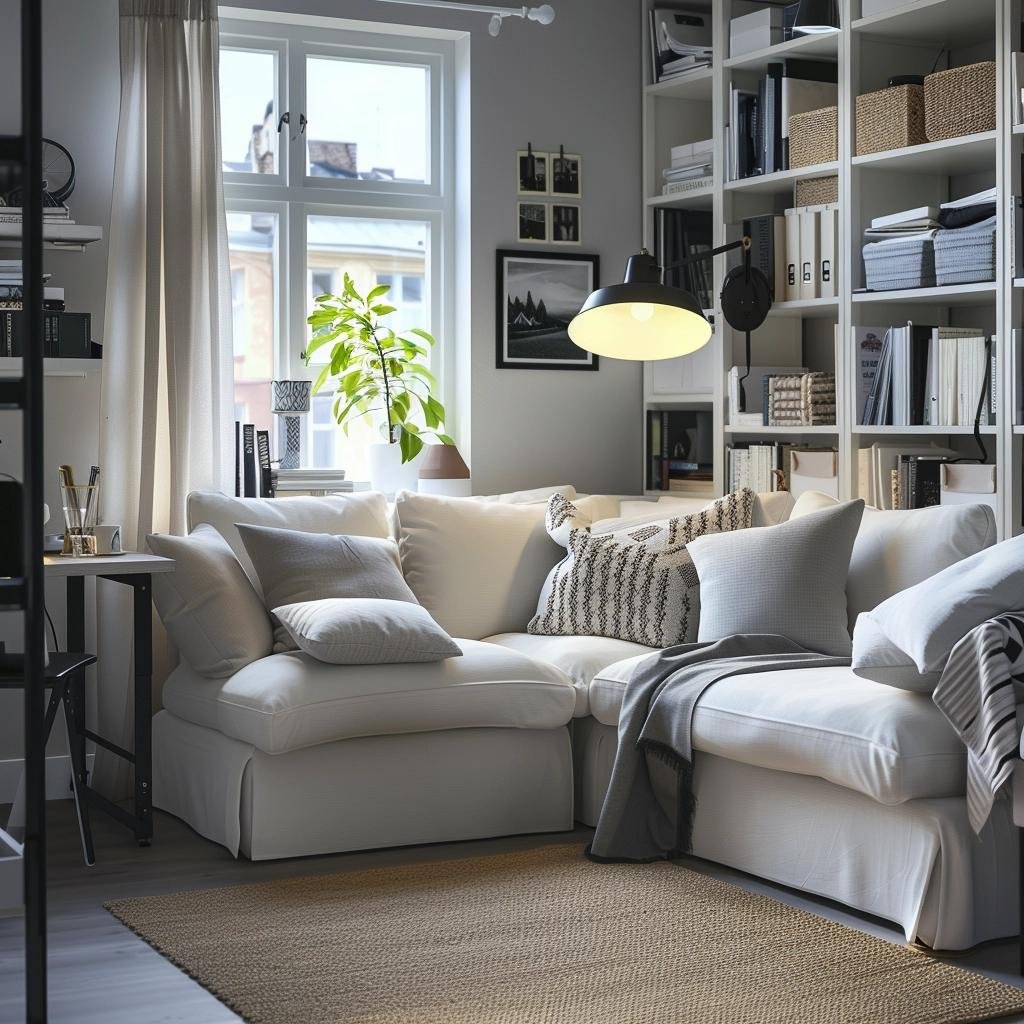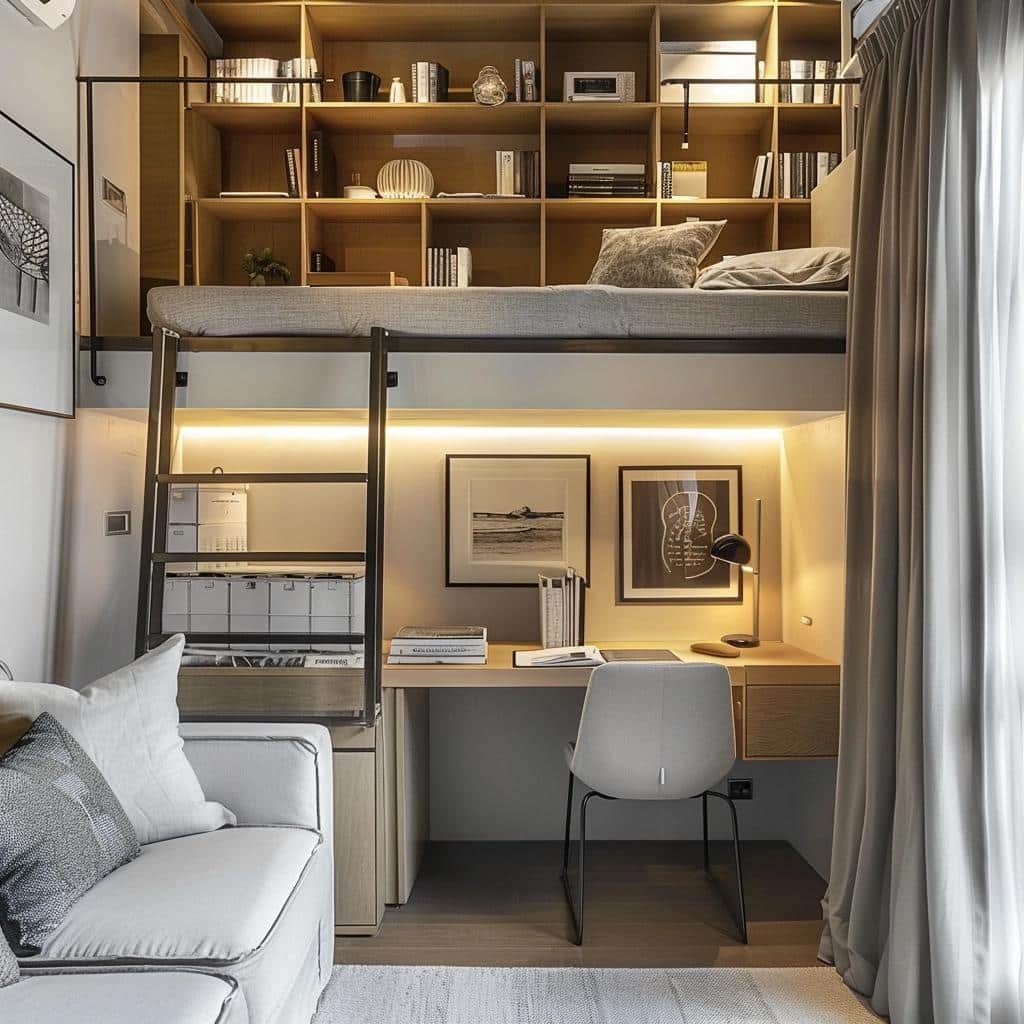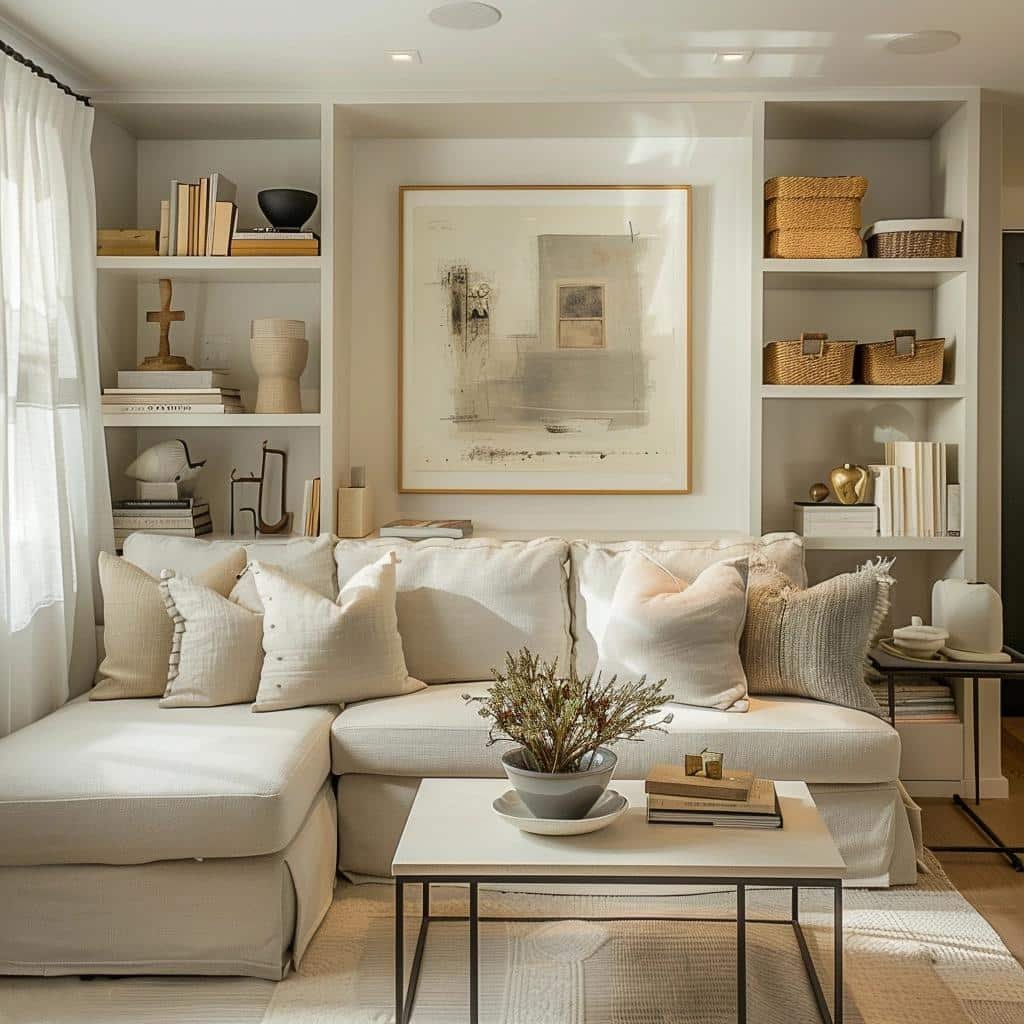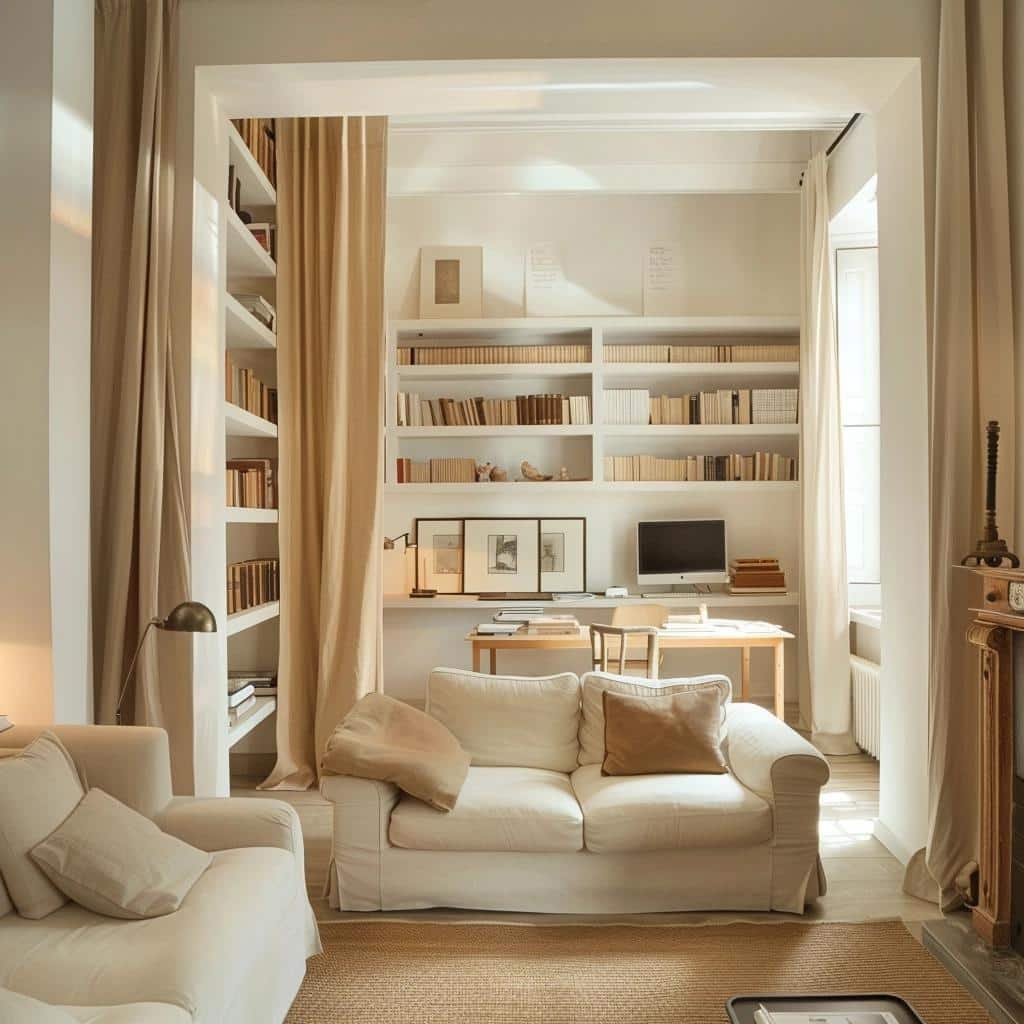Maximizing the potential of small planned rooms requires intelligent strategies that balance functionality, aesthetics, and practical considerations. This article explores effective approaches to designing and optimizing these compact spaces, ensuring they meet your needs and enhance your living experience.
Leveraging Multifunctional Furniture
Transformative Pieces
As someone who loves making the most of limited space, I’ve discovered the power of multifunctional furniture. These transformative pieces can do double or even triple duty, serving as seating, storage, and even sleeping accommodations when needed. Whether it’s a murphy bed that folds into the wall or a sofa with hidden drawers, the right multipurpose furniture can be a game-changer in a small planned room.
Space-Saving Solutions

In addition to multifunctional furniture, there are plenty of other space-saving solutions that can help optimize a small planned room. Floating shelves, vertical storage units, and even ottomans with built-in storage can all contribute to a clutter-free, efficient space. By carefully curating the pieces in your room and finding creative ways to maximize every inch, you can create a beautifully functional living area.
Maximizing Natural Light
Window Placement and Design
One of the keys to making a small planned room feel bright and airy is to capitalize on natural light. Strategic window placement and design can make all the difference. Consider positioning windows to take advantage of the sun’s movement throughout the day, and choose window treatments that allow maximum light to filter in. Sheer curtains or even simple blinds can be great options for small spaces.
Reflective Surfaces

Aside from thoughtful window design, incorporating reflective surfaces can also help amplify the natural light in a small planned room. Mirrors, metallic accents, and glossy furniture finishes can all bounce light around the space, creating an illusion of openness and airiness. This simple trick can make even the most compact room feel more spacious and inviting.
Efficient Storage Strategies
Customized Cabinetry
When it comes to storage in a small planned room, custom cabinetry can be a game-changer. By designing built-in units that maximize every inch of available wall space, you can create a streamlined, uncluttered look while keeping all your essentials neatly tucked away. From floor-to-ceiling closets to under-bed drawers, the possibilities for customized storage are endless.
Vertical Space Utilization

In addition to custom cabinetry, focusing on vertical space utilization is another smart strategy for small planned rooms. Tall bookcases, wall-mounted shelves, and even hanging baskets can help you make the most of your room’s height. This approach not only frees up valuable floor space but also creates a visually interesting, layered look that can make the room feel more dynamic and inviting.
Intentional Lighting Design
Task-Oriented Illumination
Lighting is crucial in any room, but it’s especially important in a small planned space. Task-oriented lighting, such as reading lamps, under-cabinet lights, and focused pendant fixtures, can help illuminate specific areas and make the room feel more purposeful. By strategically placing these task-oriented lights, you can create a sense of depth and functionality in your compact living area.
Ambient Lighting Techniques

While task-oriented lighting is essential, ambient lighting techniques can also play a vital role in making a small planned room feel warm and inviting. Consider incorporating dimmable overhead lights, string lights, or even candles to create a soft, cozy glow that enhances the overall atmosphere of the space. By layering different lighting sources, you can achieve a harmonious and visually appealing environment.
Color and Texture Harmony
Palette Coordination

In a small planned room, the strategic use of color can have a significant impact on the overall feeling of the space. Choosing a cohesive color palette, whether it’s soft and soothing or bold and vibrant, can create a sense of visual harmony that makes the room feel larger and more intentional. Stick to a limited number of colors and use them throughout the space for a polished, pulled-together look.
Textural Contrast
While color is essential, texture can also play a vital role in enhancing the visual interest and depth of a small planned room. Incorporating a variety of textures, such as plush fabrics, sleek metals, and natural wood, can add dimension and prevent the space from feeling flat or monotonous. By carefully balancing these different textures, you can create a visually stimulating environment that feels both cohesive and dynamic.
Conclusion: Unlocking the Potential of Small Planned Rooms
In the end, maximizing the potential of small planned rooms is all about finding the right balance between function and form. By leveraging multifunctional furniture, maximizing natural light, implementing efficient storage strategies, designing intentional lighting, and harmonizing color and texture, you can transform even the most compact spaces into inviting, well-organized oases. With a little creativity and a focus on optimizing every inch, you can unlock the true potential of your small planned room and create a living environment that truly meets your needs.
Key Takeaways:
- Multifunctional furniture and space-saving solutions are essential for making the most of limited square footage.
- Maximizing natural light through strategic window placement and reflective surfaces can create an illusion of openness and airiness.
- Efficient storage strategies, including customized cabinetry and vertical space utilization, help maintain a clutter-free and organized environment.
